Spring might be the most common time of year for home growers to plant their strawberry gardens, but fall is an excellent time to plant a strawberry patch, too. In fact, it’s arguably a better time of year to plant your strawberries.
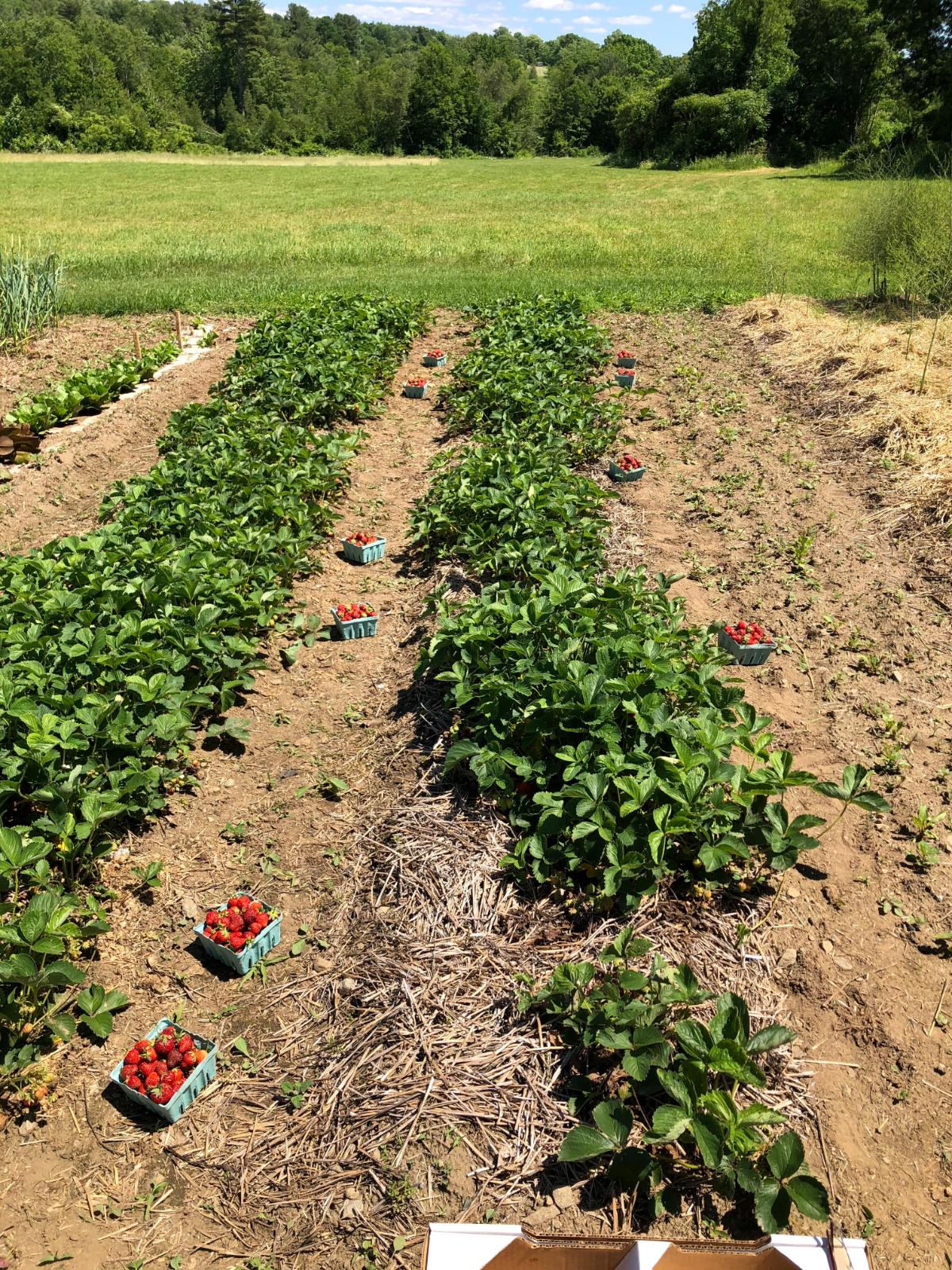
Fall planting is the time of year when most commercial growers plant strawberries. Certainly, there must be good reason for it.
Jump to:
- Why You Should Plant Your Strawberries in the Fall
- 1. More time for planting
- 2. Easier weed control and maintenance
- 3. Less watering
- 4. Better root growth
- 5. Better plant establishment
- 6. Ready to take off in the spring
- 7. Earlier harvests – gain a year on growing and harvesting!
- Order Early – Strawberry Plants Can Be Harder to Find in the Fall
- When to Plant Strawberries in the Fall
- Make Sure to Mulch Fall-Planted Strawberries!
- Move Up Your Strawberry Planting Plans to Autumn
Why You Should Plant Your Strawberries in the Fall
Here are six reasons why fall is a great time to plant strawberries:
1. More time for planting
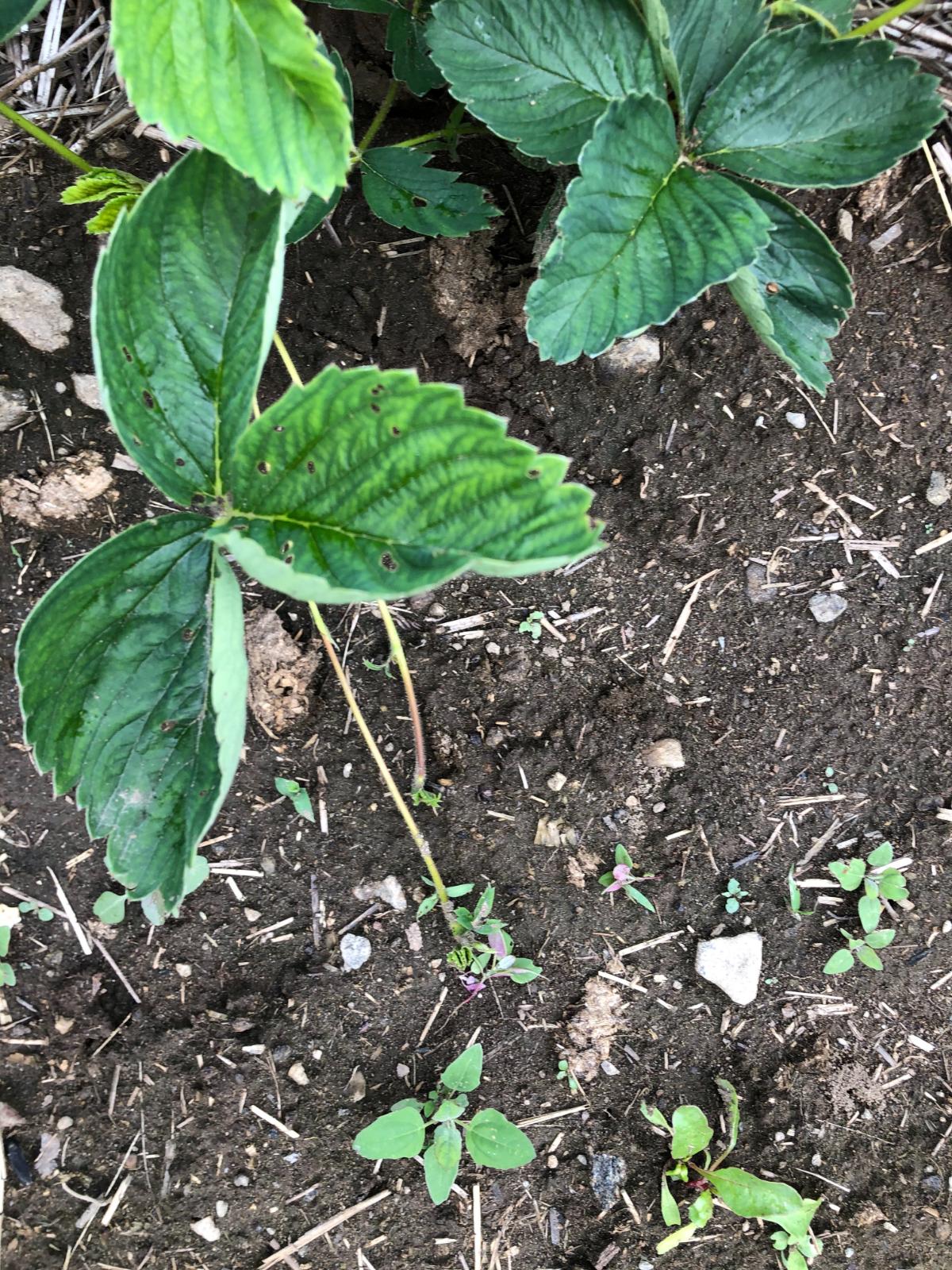
Most home gardeners have a lot more time available for planting in the fall than in the spring. It’s just a lot easier to find the time to plant a new patch of perennial strawberries in the fall than in the spring when you’re not also trying to plant all the other annuals, vegetables, ornamentals, and other plants and trees.
This means less stress, more time to do the job right, and more time to actually get to doing the job.
This is a huge advantage of planting your strawberries in the fall, but it’s not even the best and most advantageous reason.
2. Easier weed control and maintenance
Weeds thrive in spring and throughout the summer. By fall, they’re reducing in number and most weeds are annuals. In the fall, weeds are dying back and the warm, long days that cause them to explode in the summer are gone.
Weeds are also usually killed by fall frosts – but strawberries won’t be! So, while your new strawberry plants can continue to grow and set roots for the upcoming season, those weeds will be, essentially, weeding themselves out during the autumn.
We can’t say you won’t have any weeds at all in the fall, but they will be seriously less in number. And, as long as you mulch well when you plant your strawberry patch, you will not have many new weeds coming up in the fall.
All in all, in the autumn planting a new strawberry patch is a matter of bed prep, planting, and mulching with only minor maintenance for the rest of the fall.
3. Less watering
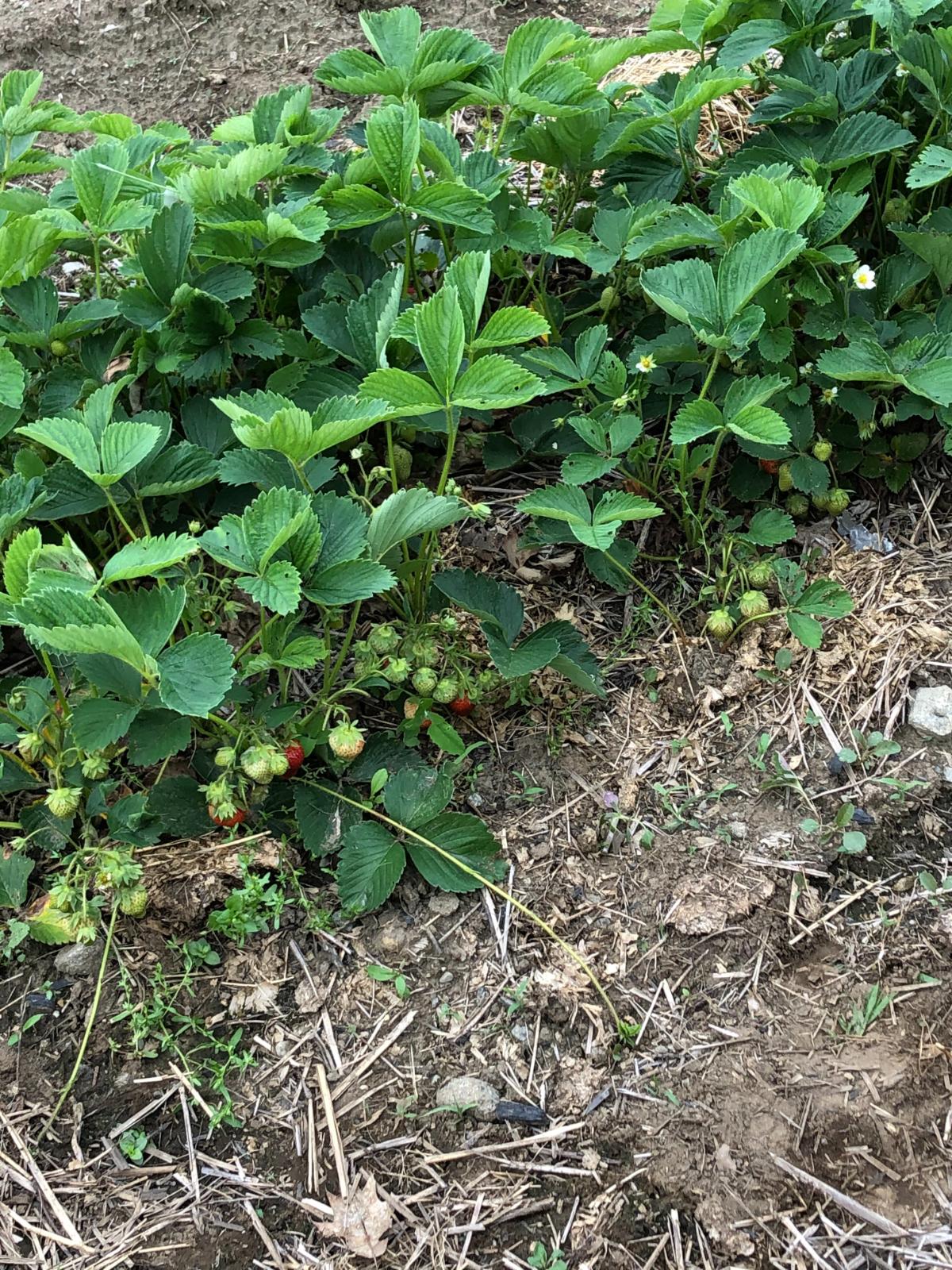
You do want to make sure your newly planted strawberries have good ground moisture throughout the fall. The moist ground is still necessary for good plant establishment and continued growth until freezing.
However, you’ll often get good rainfall in the fall anyway, and you may not need to provide extra water. (Of course, this depends on where you live and the fall weather cycle, but it holds true for many gardeners.)
The other reason you won’t need to water as much in the fall is that the ground is not losing as much moisture to high heat and long days or to intense sun. More of the moisture that is around in the fall stays in the ground.
If you’re not sure whether or not you should water in the fall, dig down an inch into the soil. If it’s moist, you can wait to water. If you’re getting an inch or two of water per week from rain (or more), you shouldn’t need to water fall-planted strawberry plants.
4. Better root growth
Cool-weather promotes root growth. Strawberry plants grow better roots when the soil is cool, such as in the early spring and autumn.
In addition, because your plants are in the ground with several weeks or months of growing before winter, they’ll set good roots and then go into the spring that much farther ahead.
5. Better plant establishment
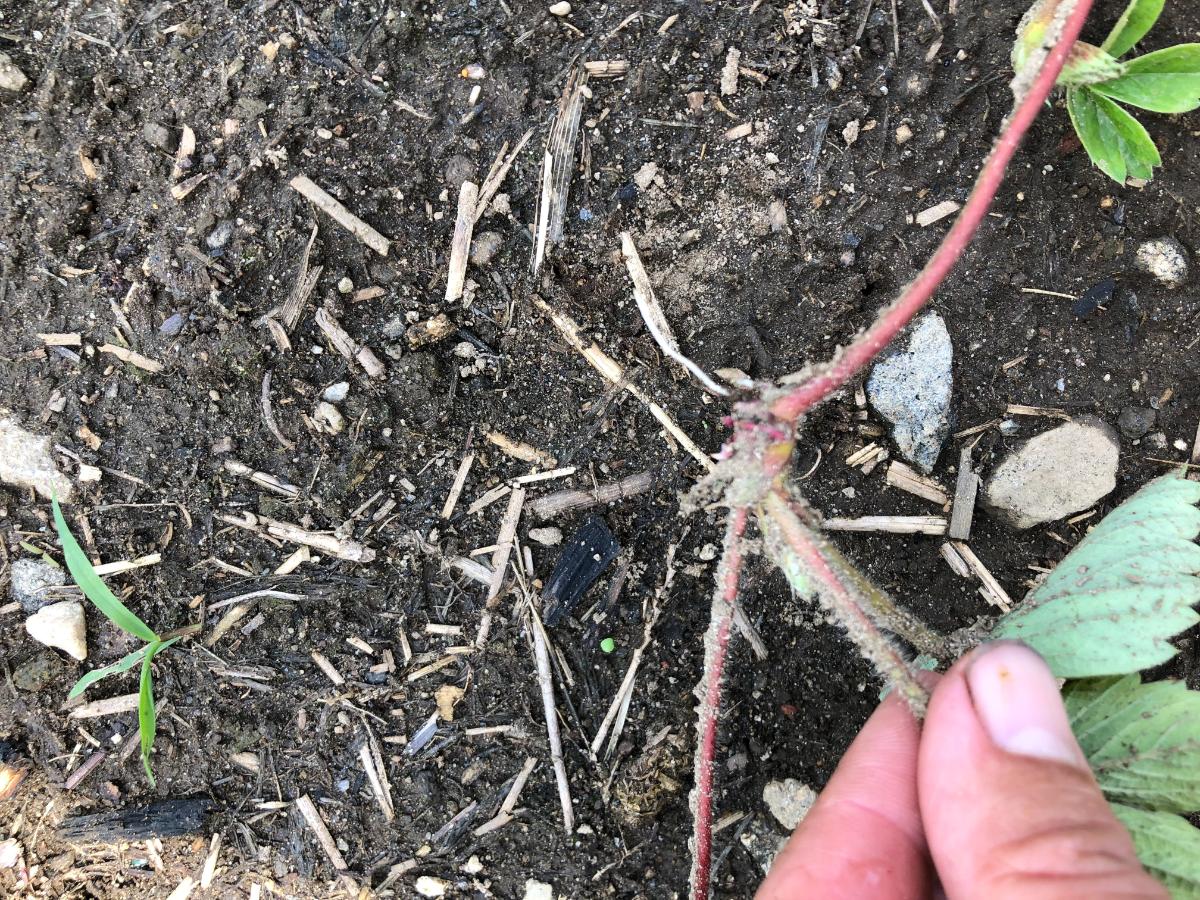
Good root growth is the key to larger, healthier plants and better summer harvests. Because the plants will be focusing on root and foliage growth in the fall, they will have an easier time getting established.
That strong early establishment period will make them better plants overall, but will also set them up for better, longer life and survival in all seasons.
Strawberries that are planted in the fall aren’t subject to the stresses that can crop up in the spring, like early hot temperatures and early drought periods. The better-established plants from the fall will be able to take more variation in weather, water, and temperature.
They will also be able to access ground moisture faster in the spring than what spring-planted strawberries could, and that is what sets the stage for better harvests.
6. Ready to take off in the spring
You can gain up to two months or more of root and plant growth in the spring if your strawberries are already in the ground from a fall planting.
This is especially helpful if you are starting with bare root strawberry plants, which are most commonly available in the spring.
Your fall-planted strawberries will come out of dormancy faster than the bare roots. They’ll be ready to grow and start growing earlier than you could even work the ground to plant in the spring.
7. Earlier harvests – gain a year on growing and harvesting!
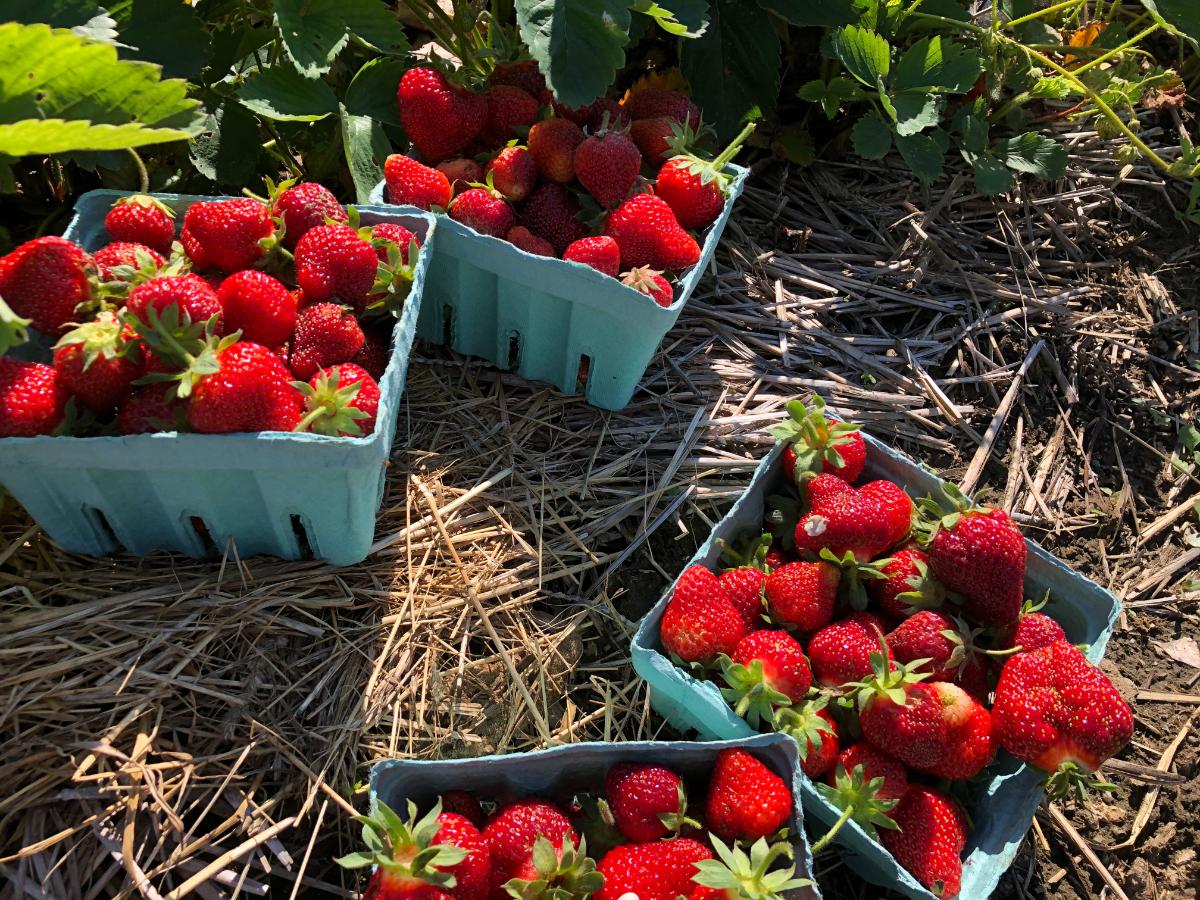
Here is the best reason to plant your strawberry plants in the fall – harvesting strawberries in your first growing year!
When we plant strawberries in the spring, we don’t plan to get a harvest that year.
It’s best to pinch off any blossoms that might grow (and you might not get blossoms on new plants at all). If you don’t, the plant expends too much energy on flowering and fruit set and takes that energy away from the plant – again, having a harder time getting established.
When you plant in the fall, the fall season acts like that first growing season. You can pick strawberries in the first spring/summer after your fall planting!
The University of Iowa reports that strawberry plants that are planted in the fall produce close to or equal to a full harvest in the very first year.
That’s a whole year of extra, early harvesting! A great use of a dormant wintertime!
Order Early – Strawberry Plants Can Be Harder to Find in the Fall

If there is one drawback to planting strawberries in the fall for the home gardener, it would be that strawberry plants are not as readily available as they are when the spring garden catalogs come out.
Strawberry sellers are just too accustomed to the timing of home gardeners buying and planting strawberries in the spring.
There are strawberries available to buy for planting in the fall.
We have a list here to help you find plant sellers that sell strawberries for fall planting.
There are several sellers out there, but the supplies are more limited than what you will find in the spring, so shop early and claim your fall strawberry plants before they sell out.
Read product descriptions to know what you’re buying (how many, shipping…)
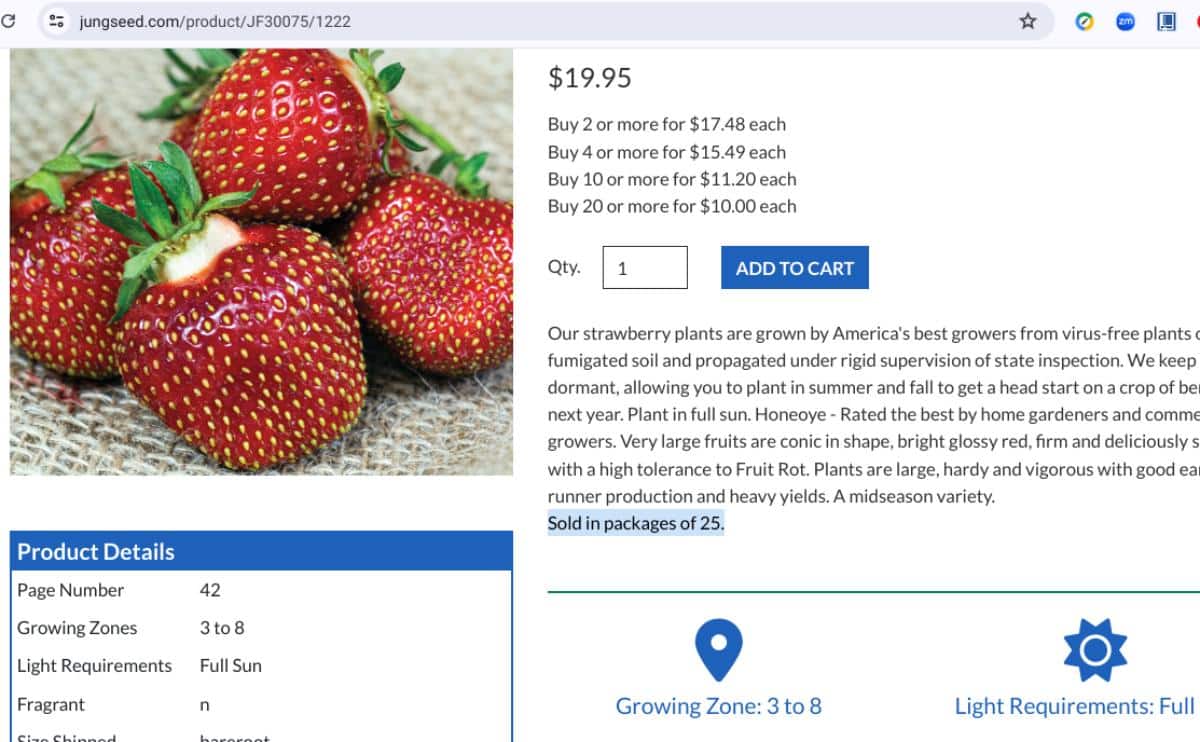
Pay attention to how the plants are sold in the fall. In the spring, you can usually buy large bundles of bare-root strawberries for cheap money. In the fall, the selections are more varied.
Some sellers do sell bare root bundles (the cheapest way to buy a lot of plants for a good-sized patch of strawberries). Others, however, only sell potted plants. Just make sure you read the product description so you know how many you will receive.
Also, pay attention to when the product says it will ship! The plants should be listed as shipping in the fall.
Some companies do open plants for preorders months before the next spring planting season, though, so make sure you know you are buying plants that will either ship immediately or in the fall!
You can usually start ordering strawberries to plant in the fall by July or August.
When to Plant Strawberries in the Fall

You have some flexibility in planting strawberries in the fall. For best results, plant when you still have moderate warm days.
Ideally, this will be after the worst of the summer’s heat and the dog days so that the plants can establish good roots without drying out and without struggling with the summer heat.
Technically, you can plant fall strawberries any time while the ground is still workable, but really, you’ll want them in when there is still time for the roots to grow and anchor. This means at least 6 to 8 weeks before a hard freeze. Four or more weeks before a frost is even better timing.
Planting times will vary according to your zone and location, but late August through early- to mid-October is a good time for planting fall strawberries.
Make Sure to Mulch Fall-Planted Strawberries!
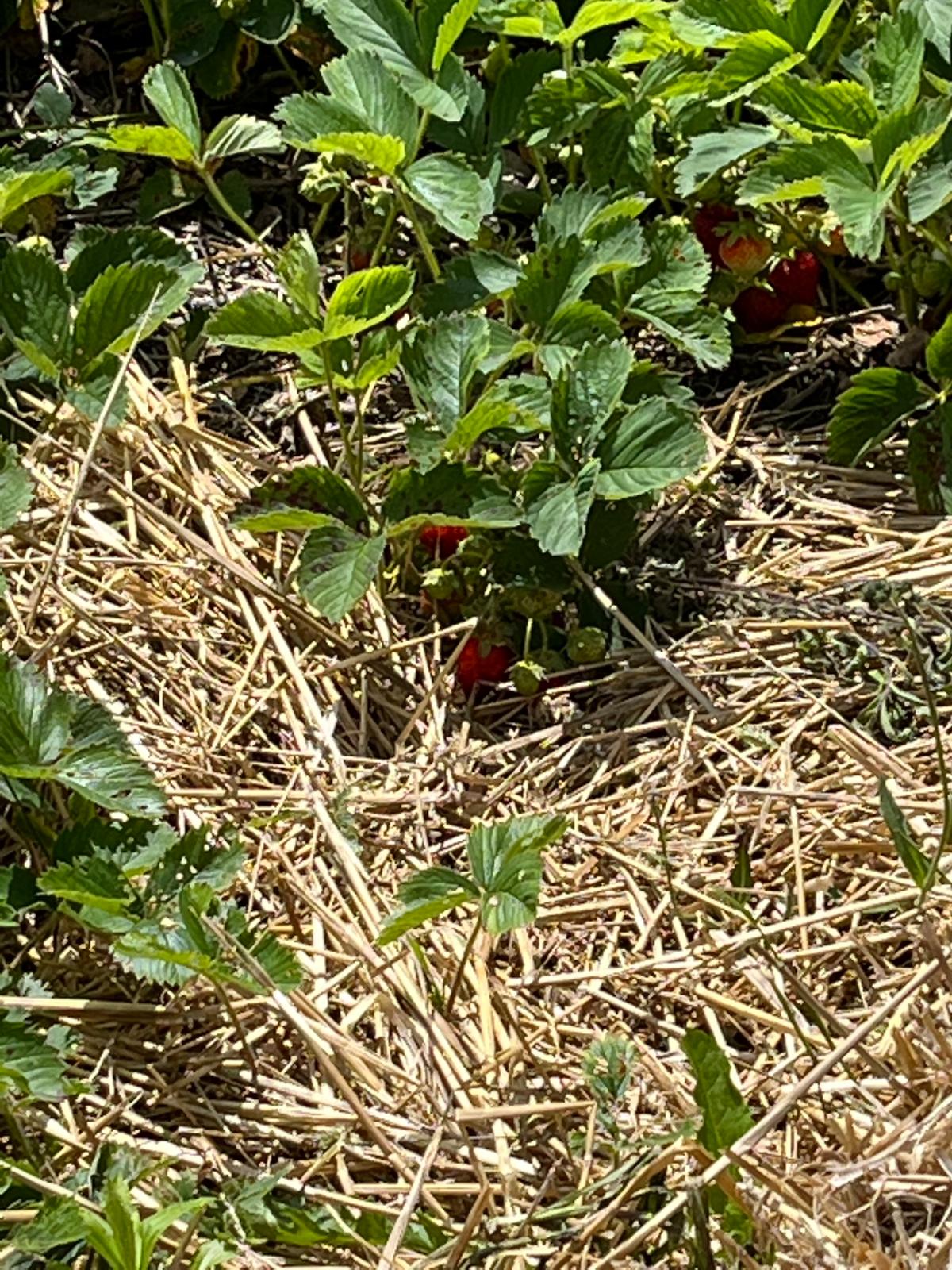
One final note about planting strawberries in the fall:
Make sure you mulch your fall-planted strawberry patch.
Mulching strawberries in the fall is always smart. The roots are shallow and can heave easily in the winter, so they have much better survival rates and less root damage when they are mulched in the fall (which equals bigger, better plants and more berries).
Mulching helps maintain soil moisture and protect strawberries through the winter. It also keeps a layer of weed suppressant in place. That helps your strawberries stay weed-free, reduces competition for water and nutrients, results in better plants, and makes a low-maintenance strawberry garden for you!
Mulching is always recommended for all strawberry patches, but it is especially important for new, young plants that have just been planted in the fall. It simply sets them up for better success.
Straw is one of the best mulching materials for strawberries. You can also use weed barrier fabrics or things like shavings or pine needles.
Move Up Your Strawberry Planting Plans to Autumn
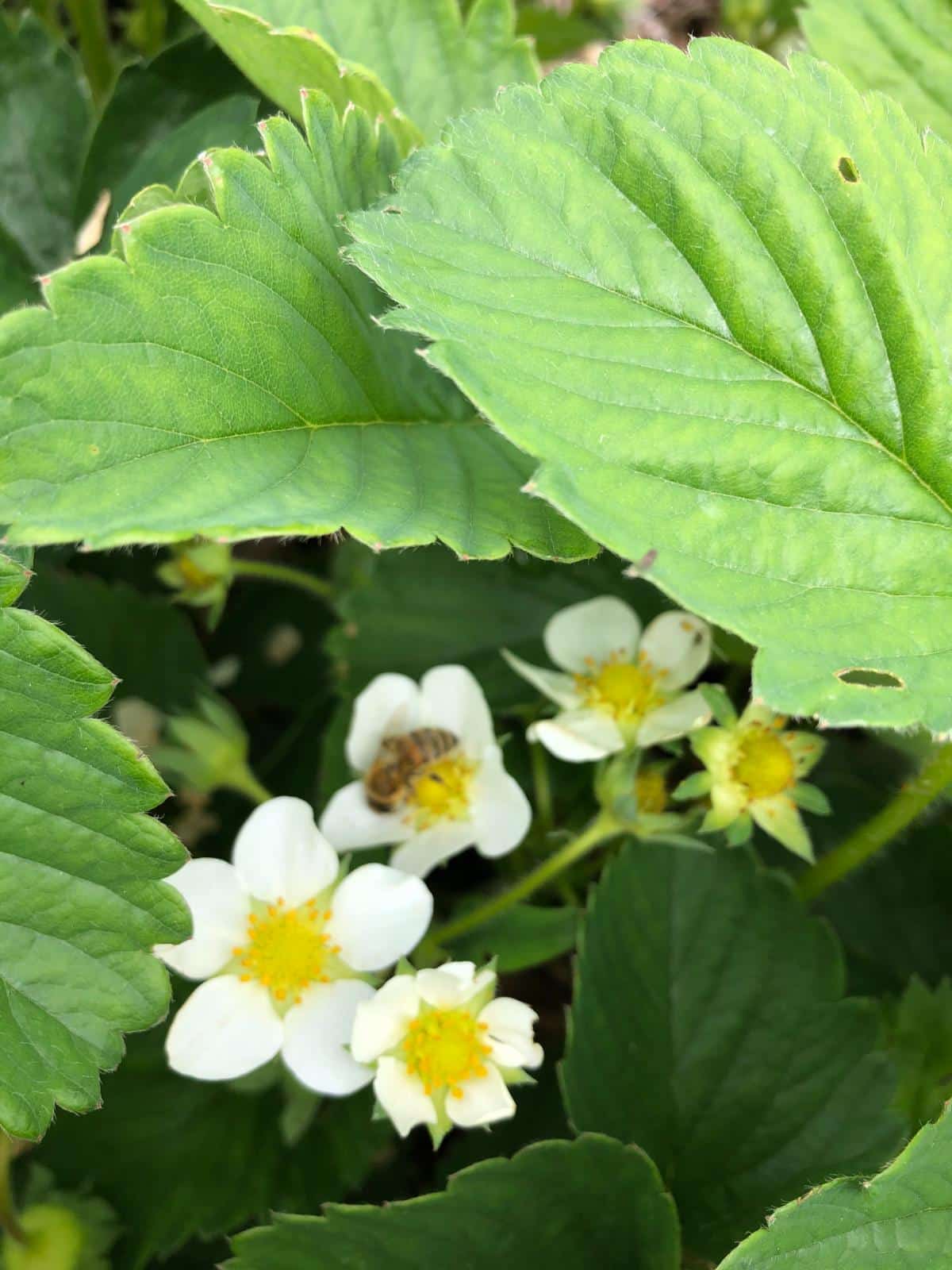
If you’ve already decided to add strawberries to your home garden, or if you have an old patch of strawberries and it is time to replace it, don’t wait until the spring.
Do yourself a favor and plant that patch this fall. Your plants will be happier, and you’ll be happier because you’ll gain a whole year of harvesting those strawberries!









Leave a Reply